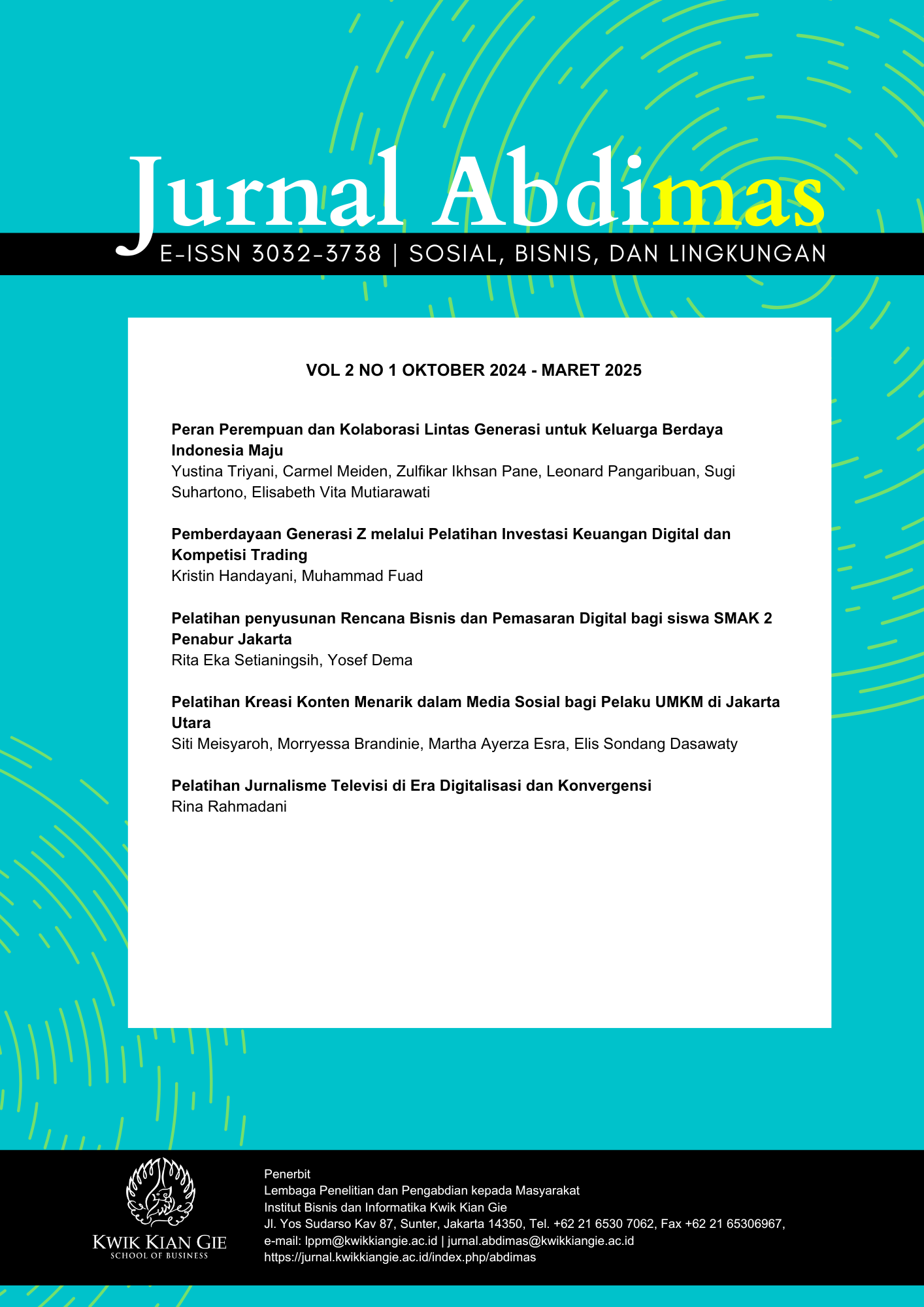Pelatihan Jurnalisme Televisi di Era Digitalisasi dan Konvergensi
Main Article Content
Abstract
Media convergence has brought almost a major alter in how news coverage is done. News coverage is moving to advanced, intelligently, and interactive media narrating, as well as free, multi-skilled, and technology-powered news generation. One journalist is presently required to report and create news for all diverse designs. Within the computerized and joining time, journalist are required to report their scope to diverse stages, whether to print, tv, or online. Photojournalists, for case, are required to be able to record recordings and type in for TV or online. Moreover, online journalist must be able to record recordings and do live reports on TV. In the interim, TV journalists must be able to require photographs and compose for print and online media. This noteworthy alter within the work of journalist is the premise for the significance of writer training for understudies of SMK Strada 1 in Jakarta. The preparing points to supply an presentation and aptitudes on how to ended up a journalist within the advanced and meeting period. So that SMK understudies as of now know from an early age how journalist work within the current advanced and merging period. In any case, multi-skilled and multi-tasking journalist increment cost-effectiveness, reorganize newsrooms and give a great reason for cutbacks. Media organizations can cut costs due to expanded efficiency and less journalist required.
Downloads
Article Details

This work is licensed under a Creative Commons Attribution-NonCommercial-ShareAlike 4.0 International License.
References
Balbi, G. (2017). Deconstructing “Media Convergence”: A Cultural History of the Buzzword, 1980s–2010s. In: Sparviero, S., Peil, C., Balbi, G. (eds) Media Convergence and Deconvergence. Global Transformations in Media and Communication Research - A Palgrave and IAMCR Series. Palgrave Macmillan, Cham. https://doi.org/10.1007/978-3-319-51289-1_2
Bawapratama, C. R. (2010). Konvergensi media dan perubahan dalam manajemen SDM media. Jurnal Komunikasi, 5(1). https://doi.org/10.20885/komunikasi.vol5.iss1.art2
Briandana, R., & Irfan, M. (2019). Broadcasting management: The strategy of television production configuring for sustainability in the digital era. International Journal of English, Literature and Social Sciences (IJELS), 4(6). https://dx.doi.org/10.22161/ijels.46.40
Briandana, R., Pribadi, E., & Balaya, S. (2020). Mapping the convergence trends of television broadcasting media in Indonesia. Jurnal Magister Ilmu Komunikasi, 6(2). http://dx.doi.org/10.30813/bricolage.v6i02.2120
Dave, A. (2011). Media Convergence: Different Views and Perspectives.
Dhiya , N. (2020). Implikasi Konvergensi Media Terhadap Kompetensi Reporter Tempo.co. KOMUNIKA, 7(1), 25–31. https://doi.org/10.22236/komunika.v7i1.5563
Gordon, R. (2003). The Meanings and Implications of Convergence. In K. Kawamoto (Ed.), Digital Journalism: Emerging Media and the Changing Horizons of Journalism (pp. 57-74). Lanham, MD: Rowman & Littlefield Publishers.
Grant, A. E., & Wilkinson, J. S. (2009). Understanding media convergence: The state of the field. Oxford University Press.
Hamna, D. M. (2018). Konvergensi media terhadap kinerja jurnalis (Studi kasus: Fajar TV dan Fajar FM). Jurnal Dakwah Tabligh, 19(1), 58–83. https://doi.org/10.24252/jdt.v19i1.5911
Indriawati, A. W. P. E. (2018). Media convergence strategy - A case study of Kompas Group (Harian Kompas, Kompas.com, and Kompas TV). International Journal of Science and Research (IJSR), 7(9), 106–111. https://doi.org/10.21275/ART20191046
